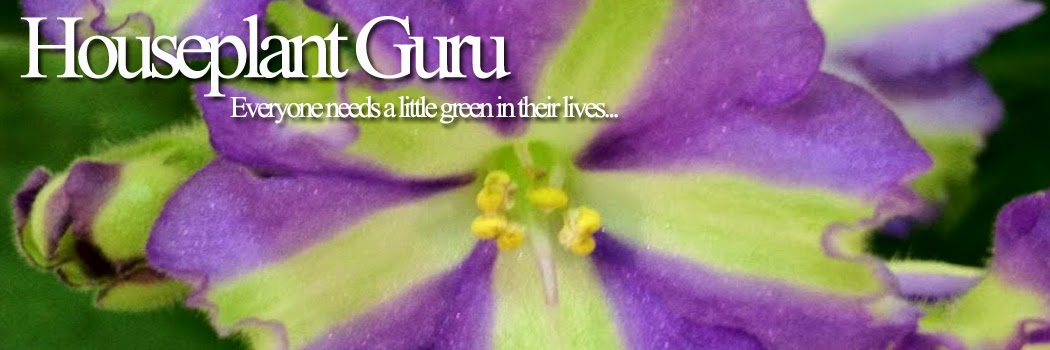 |
| Fiddle leaf fig with a Dracaena at Kingwood Center in Ohio |
When I volunteer with the kids at Belle Isle in the Anna Scripps Whitcomb Conservatory, I always point out that common names of plants are quite often given to the plants because of what they resemble. The leaves of the fiddle leaf fig look like fiddles or violins, thus the common name. It helps us remember the plants.
The fiddle leaf fig or Ficus lyrata is native to lowland tropical rainforests in west Africa. It is a banyan fig, meaning it often starts life as an epiphyte high in the crown of a tree, sends roots down to the ground, and can slowly strangle the tree it is growing on. As a stand-alone tree, it can reach up to 40' tall.
In your home, the tree will probably max out at 6', but if you up-pot it and have the room, it could get bigger. When it is the size you want it to stay, instead of re-potting it, top dress it with fresh soil to replace depleted soil. It needs as much light as you can give it for it to be happy. A South or West facing window would be best, but place it wherever you have the most light. Because it is from tropical rainforests, high humidity is it definitely a must. That can be hard to provide in our homes, especially in the winter with our furnaces running. If it is dry, the plant will react by losing leaves. The worst reaction to dry air, though, will be an infestation of spider mites. This will be evident to you as it was to me when I saw reddish spots on my leaves . The red spots are the areas where the spider mites pierce the leaves of the plant with their mouth parts. The caustic nature of the sap cause the reddish spots when it is exposed to the air. The sap from the tree can also cause stains and be an irritant to skin so be careful when handling this plant. The picture below shows spider mite damage on my plant....:(
 |
| Spider mite damage on my fiddle leaf fig |
Low humidity may also be displayed as brown edges on the leaves.
On the other hand, if the plant is kept too wet, soft leaves with brown patches may be displayed. The key is to have your plant growing in a rich, well drained soil. Keep it well watered, letting it dry down slightly between waterings, never letting it dry out completely. To keep the humidity up, place a pebble tray under your plant which is kept filled with water. The tray should be larger than the container you are growing your plant in so the humidity rises around the plant. Never let your plant sit in the water, though. Fertilize regularly during the growing season which is March-September here in Michigan. It is sensitive to high salt content, so flush your soil regularly, or use an organic fertilizer, such as fish emulsion.
Th fiddle leaf fig is a dramatic, large houseplant that can be the focal point of any room you place it in. I also have the mini version called 'Little Fiddle' if you don't have the room for a large plant but like the look of the plant.
 |
| Ficus lyrata or fiddle leaf fig at the Veterans Memorial Library in Mt. Pleasant MI |























